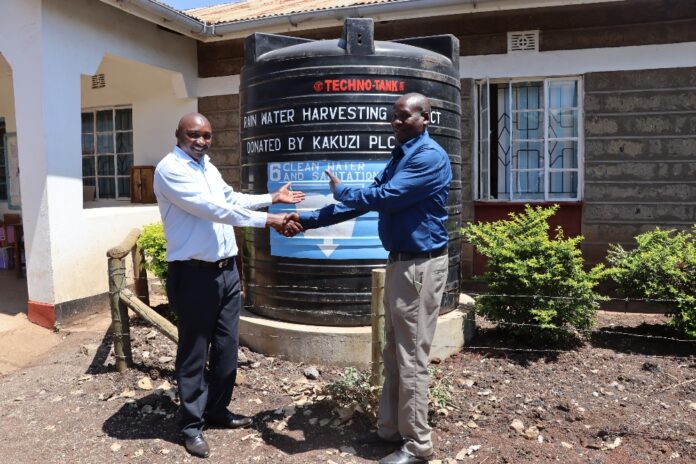Kakuzi Plc has invested over Sh. 2 million to set up rainwater harvesting systems and 28 modern ablution blocks across several schools and institutions in Murang’a County.
This initiative aligns with Kakuzi’s mission to foster quality education, access to water, sanitation, and environmental conservation, by empowering its communities and driving
sustainable development.
The rainwater harvesting systems include a 10,000-litre capacity tank installed at the Gituamba Health Facility, shared by Ithanga Sub-County and Kiambu County residents, and two 5,000-litre tanks provided to both the Murang’a South Registrar of Persons Office and the Murang’a South Sub-County Education Office. These systems will enable these institutions to collect and store rainwater, increasing the availability of clean water for over 1,000 community members and staff.
Speaking during the handover ceremony, Kakuzi Managing Director Mr. Chris Flowers underscored the company’s dedication to environmental stewardship and community health. “These water harvesting systems and sanitation facilities are part of our efforts to support healthier communities with sustainable water management practices”, said Mr. Flowers.
Man who retired as ship captain after 27 years, now dairy farmer in Murang’a
The firm also installed 28 ablution blocks in seven local institutions, including Ngimu EDCE Center in Kimorori, Githanji Primary School in Kabati, Pundamilia Primary School and the AP Line at Murang’a South Sub-County. More than 2,000 students will benefit from the improved sanitation facilities, designed to create a safer and cleaner environment conducive to learning.
These resources will also facilitate staff, healthcare workers, and community members who seek services in the area to access clean water and sanitation.
Mr. Flowers also added “This project is part of a broader strategy by Kakuzi to support local communities and promote sustainable development. By providing much-needed resources in the areas of health, education, and sanitation, we aim to promote self-
sufficiency and improve long-term sanitation challenges, especially during seasons of heavy rainfall.”
The agri-food producer remains committed to water conservation through practices such as catchment preservation, continuous rainwater harvesting, and support for sustainable water access. These efforts will help safeguard this vital resource for future generations.








